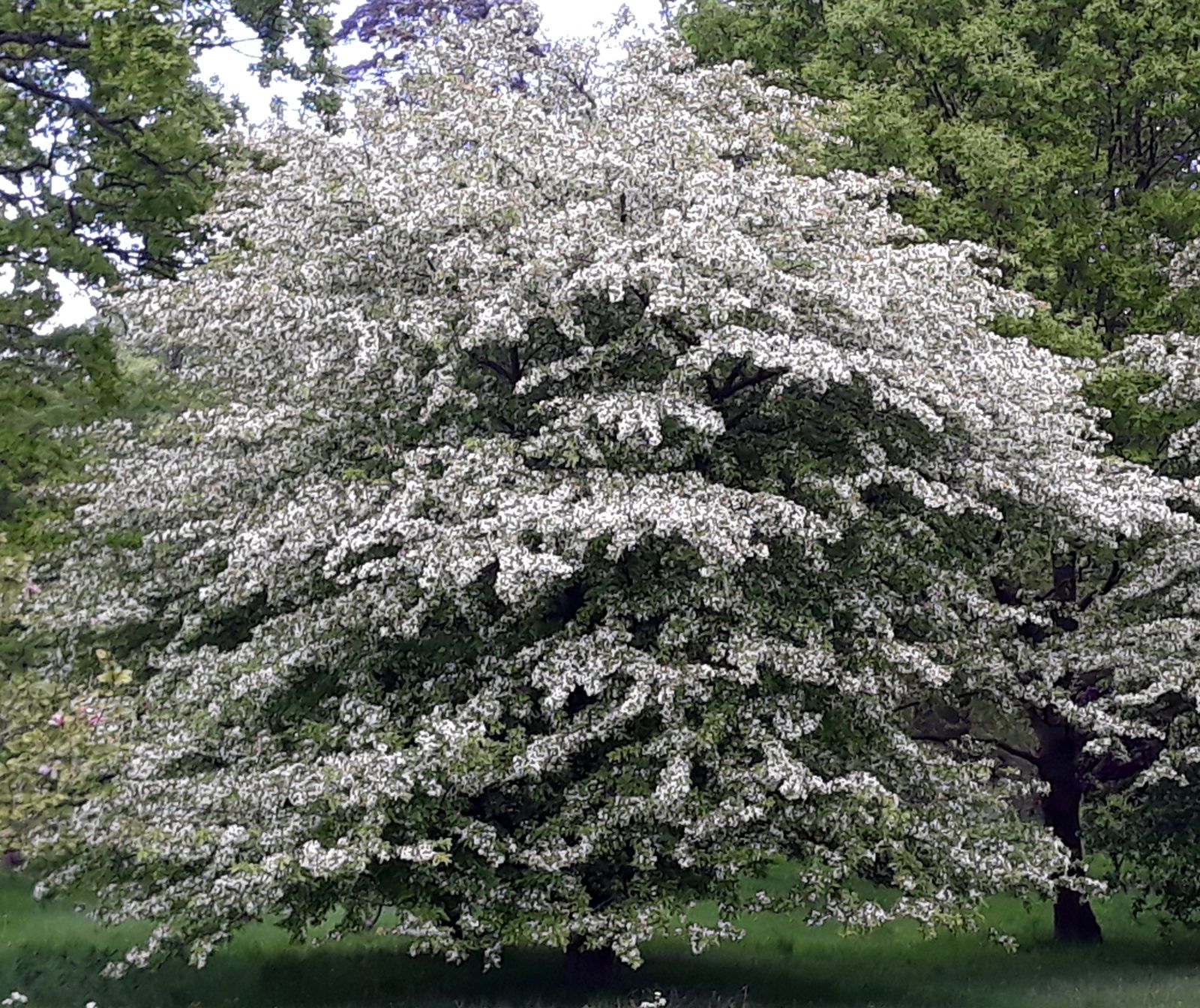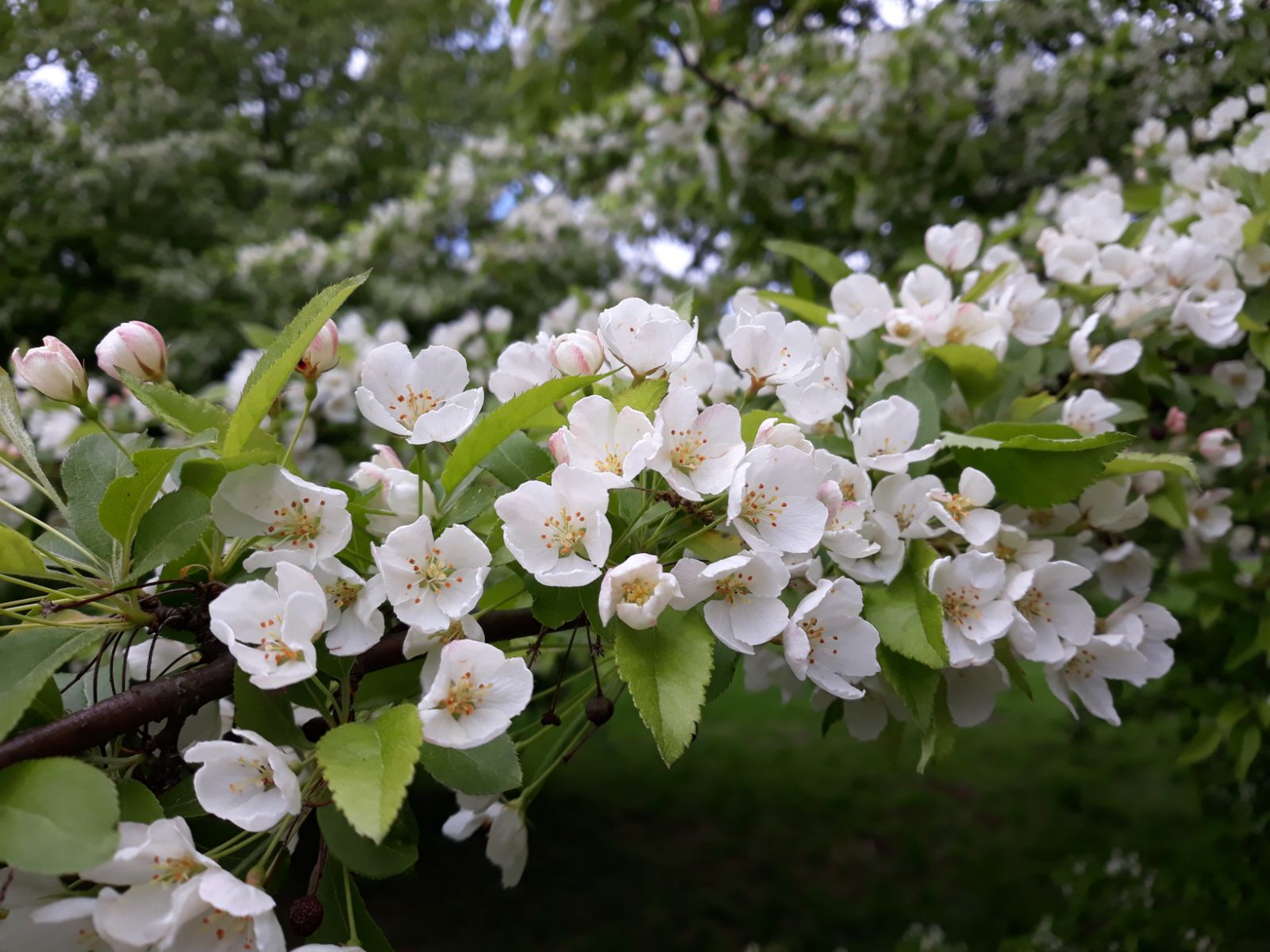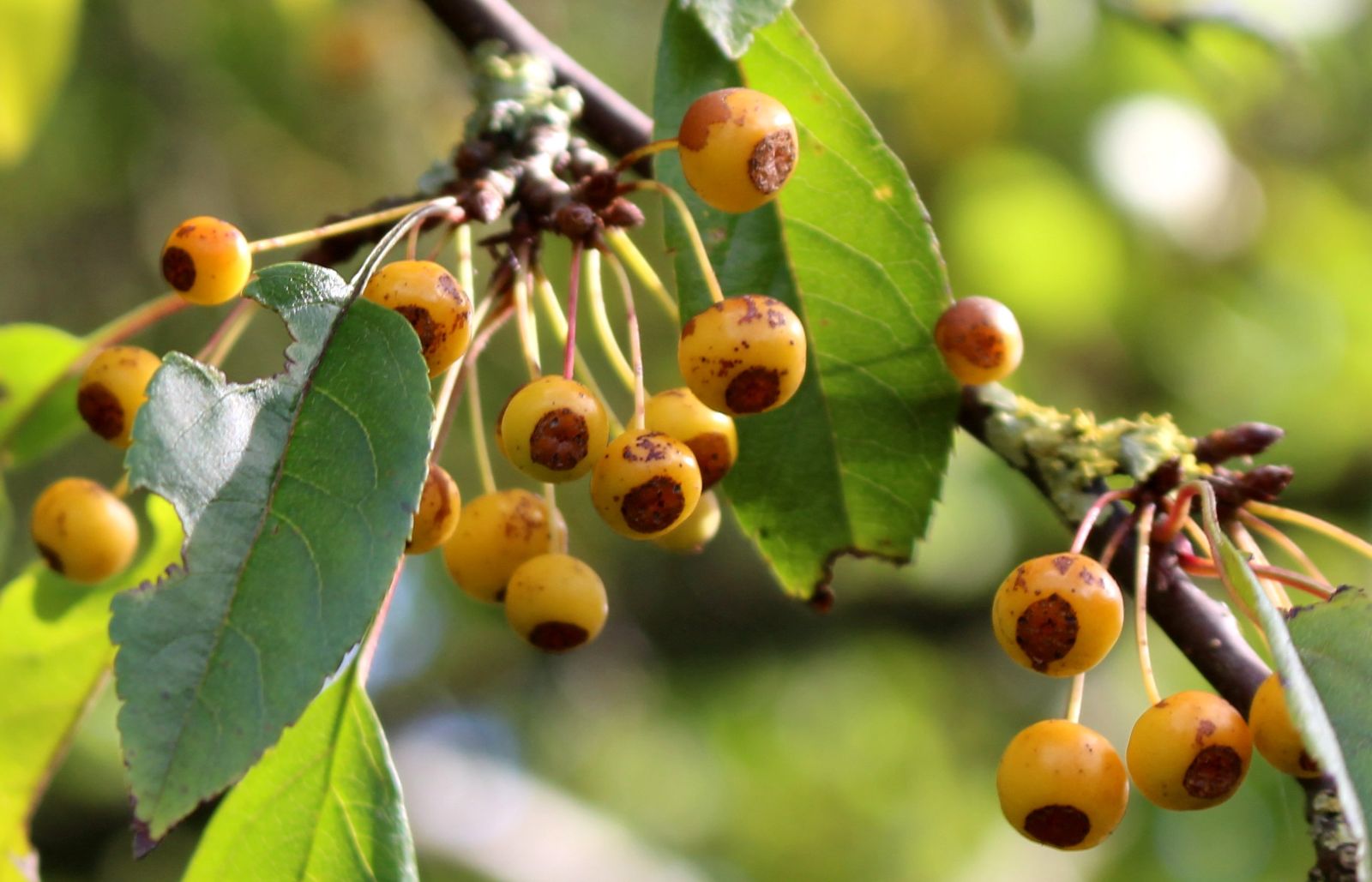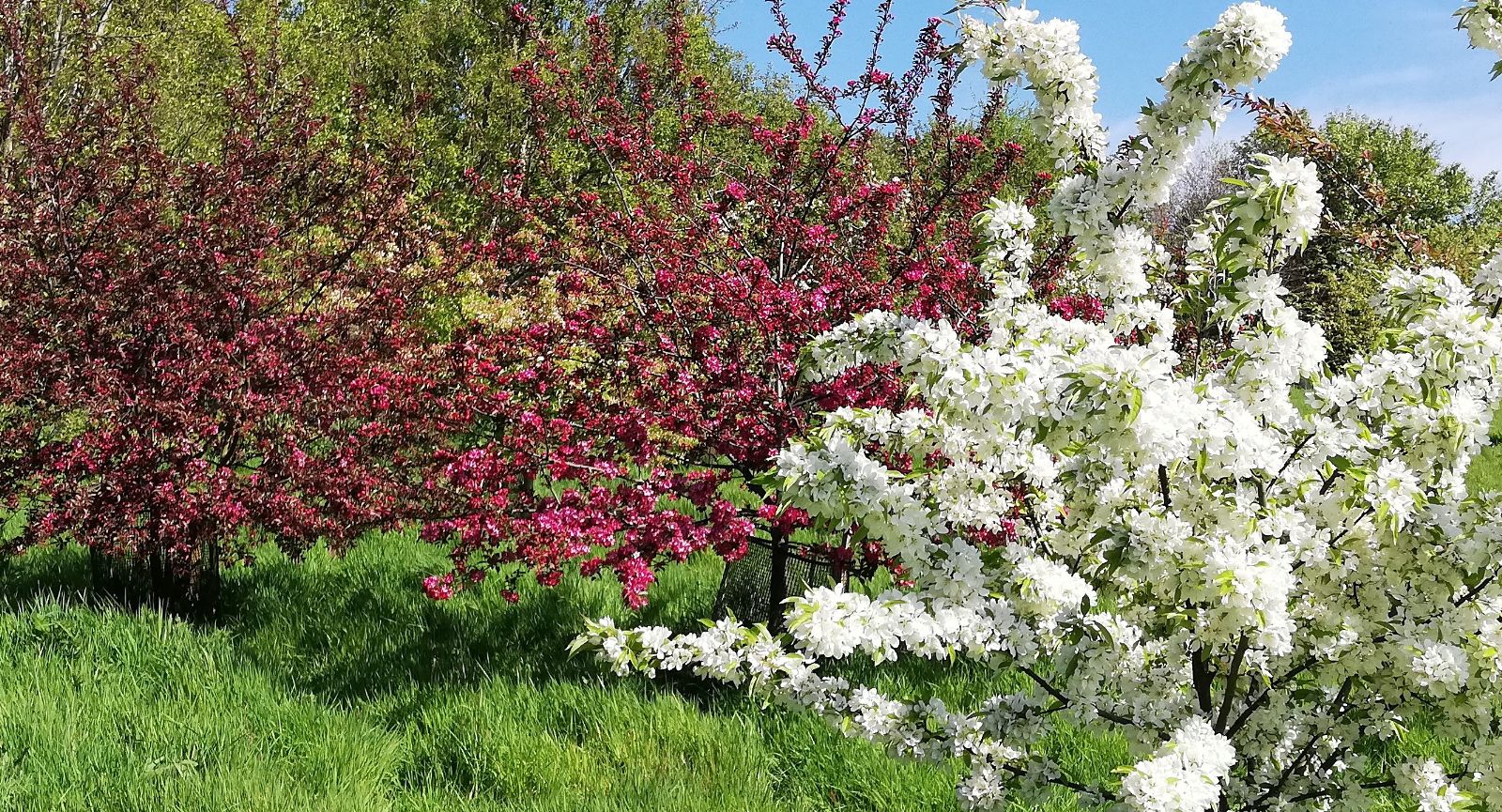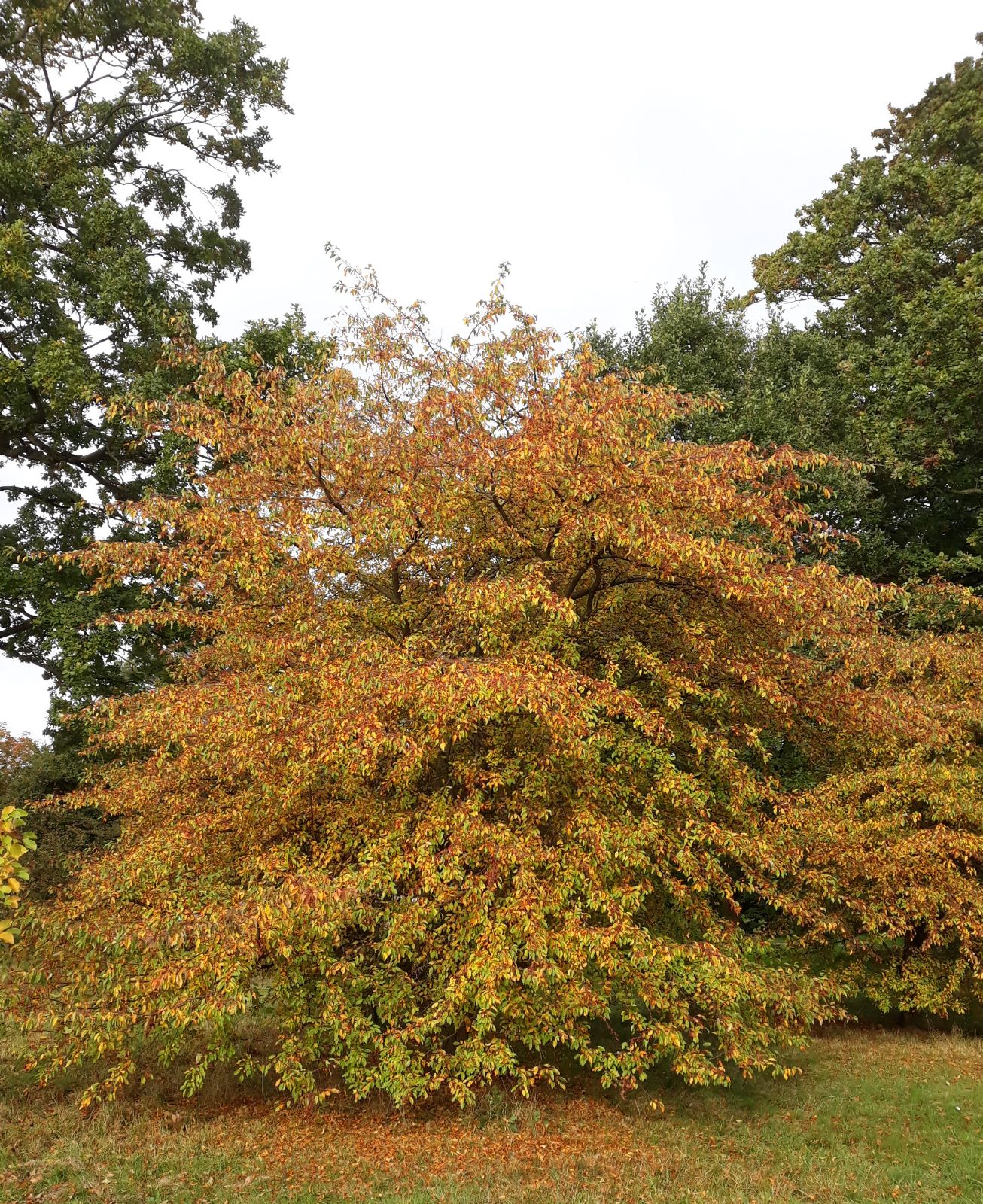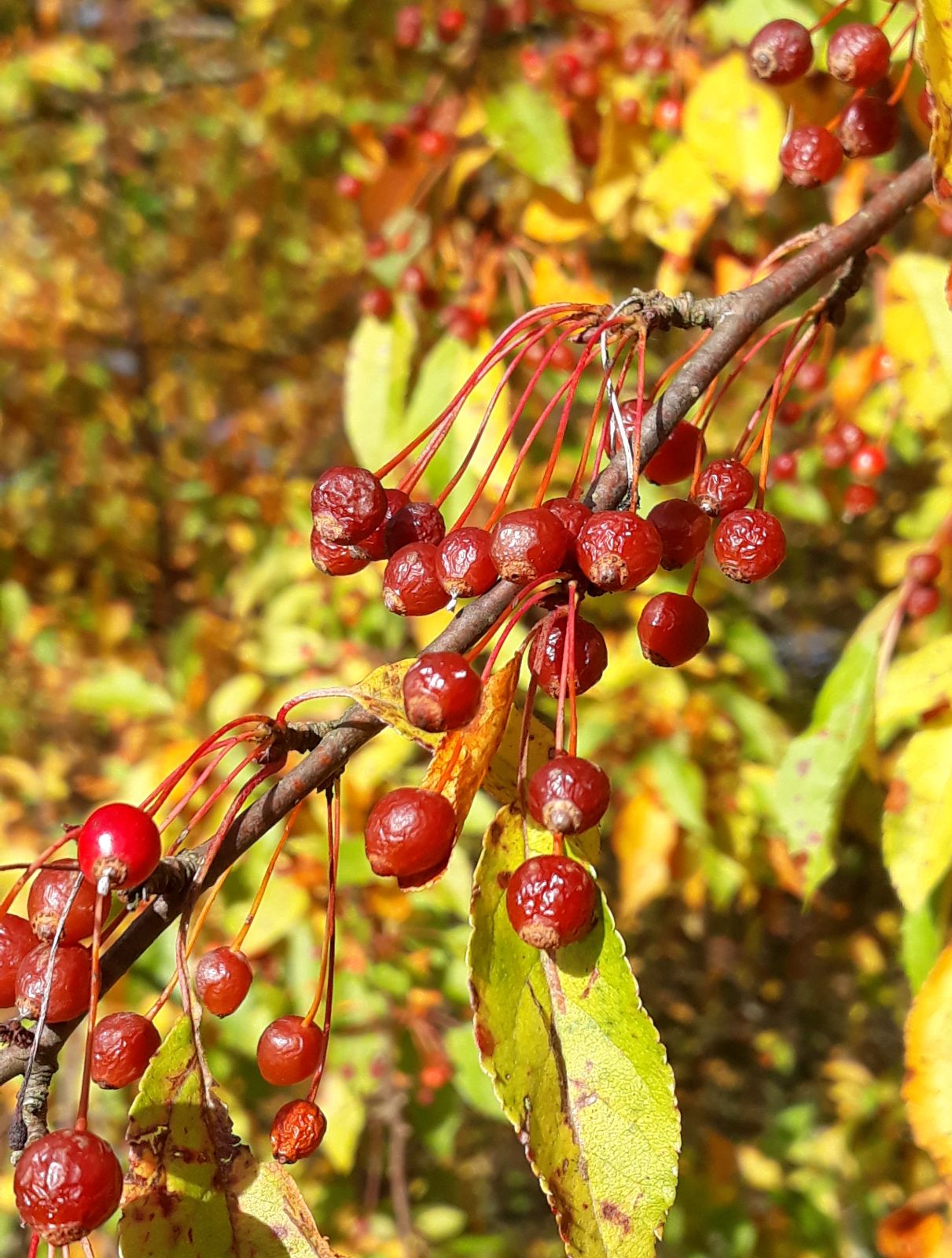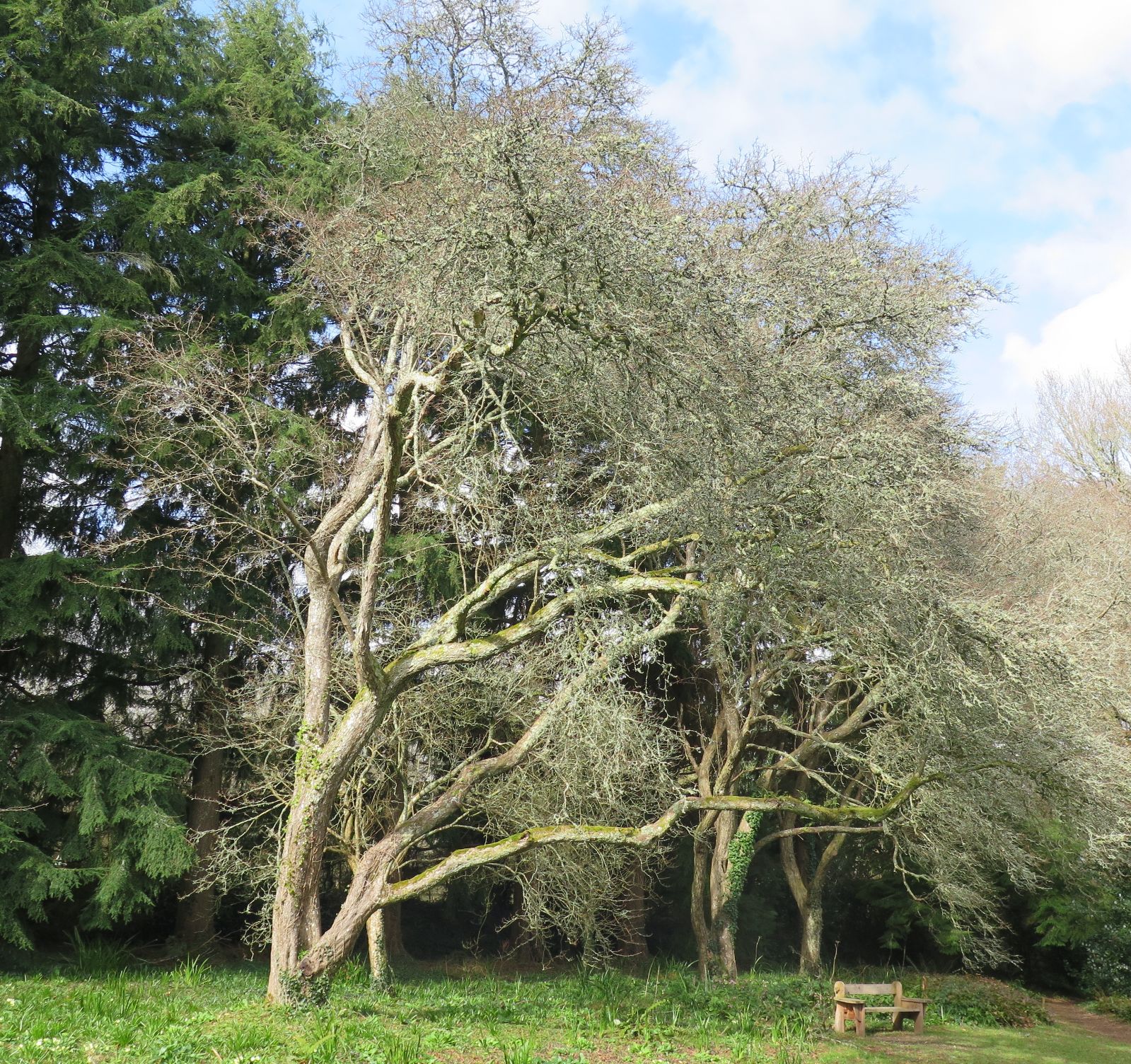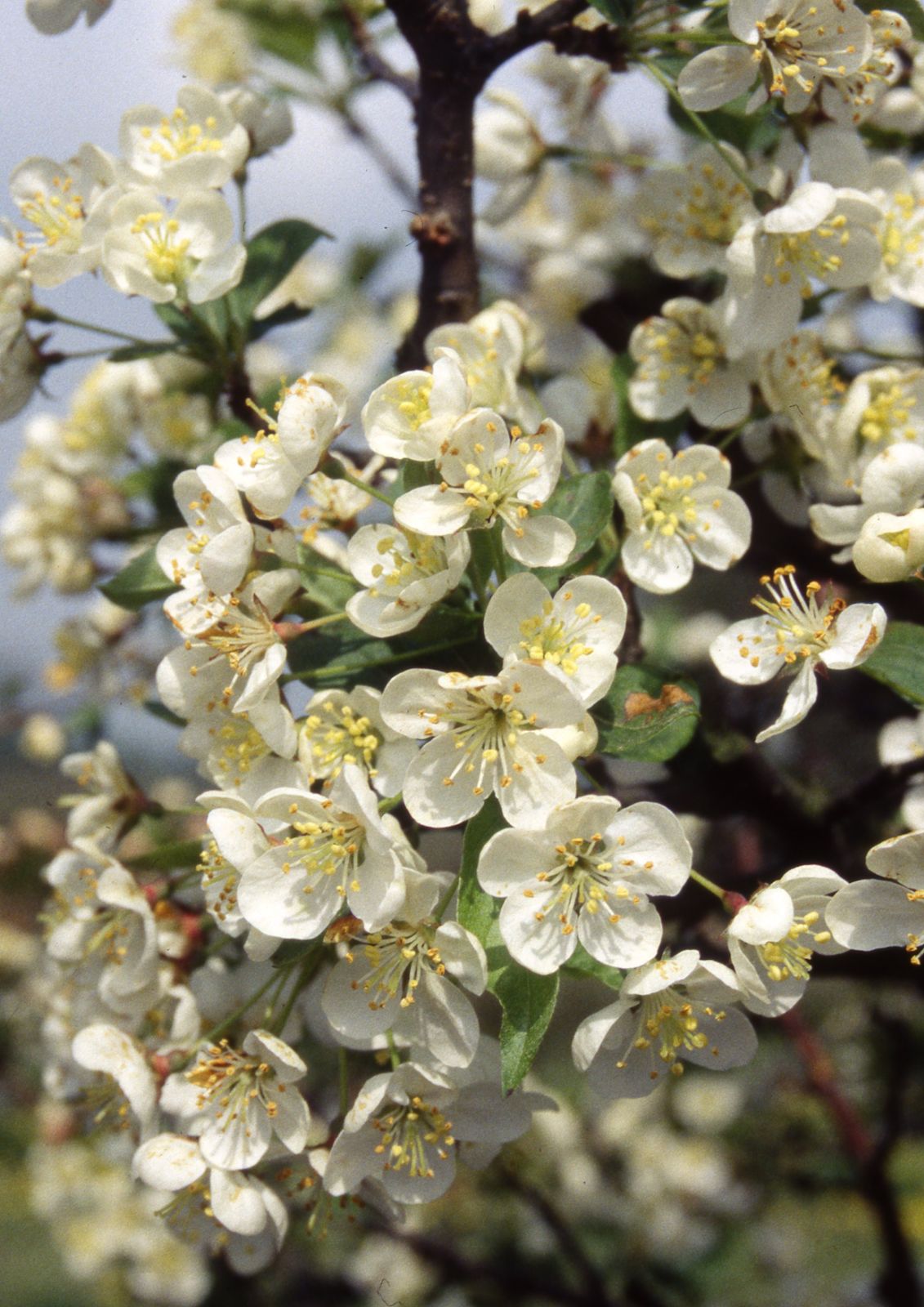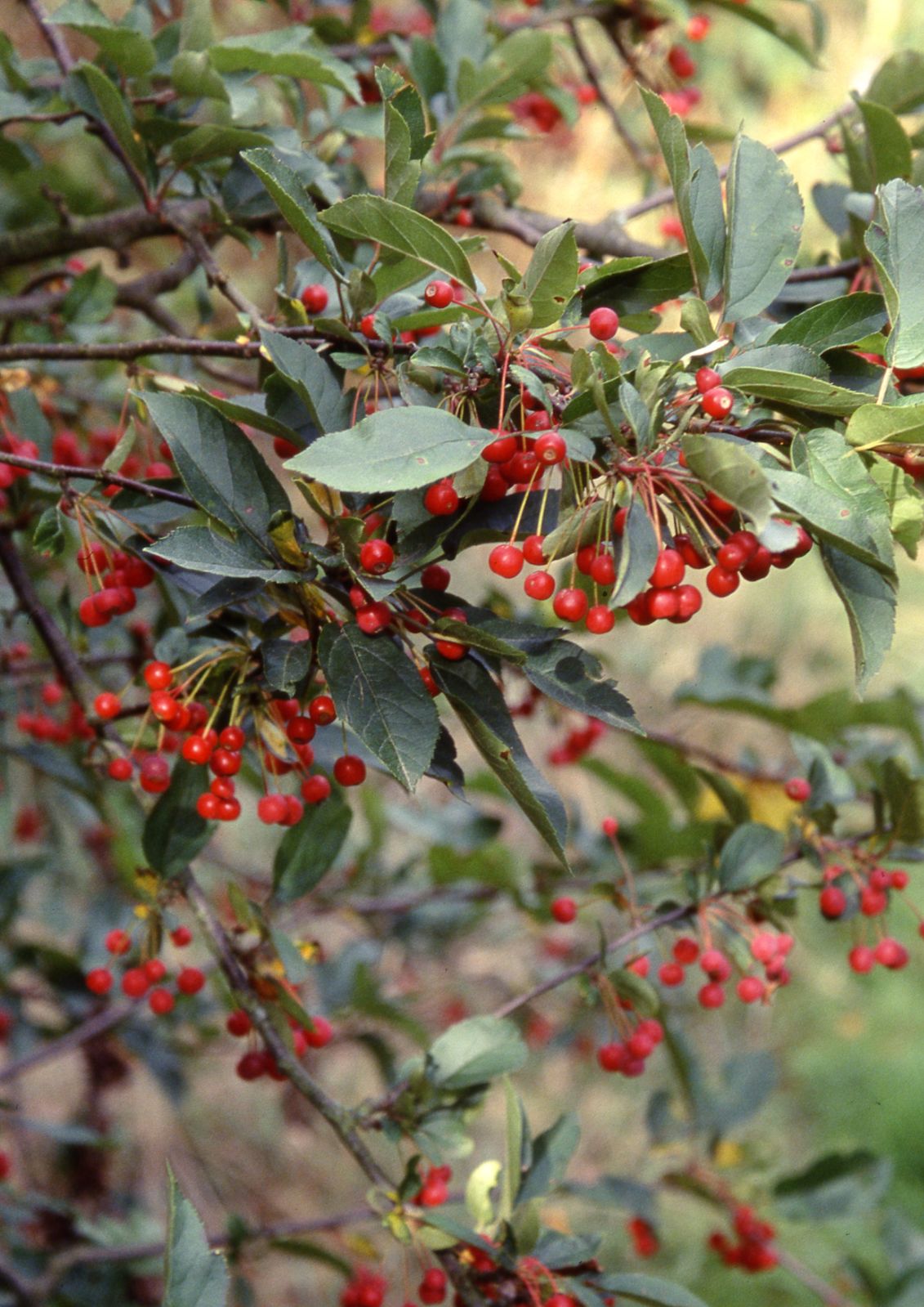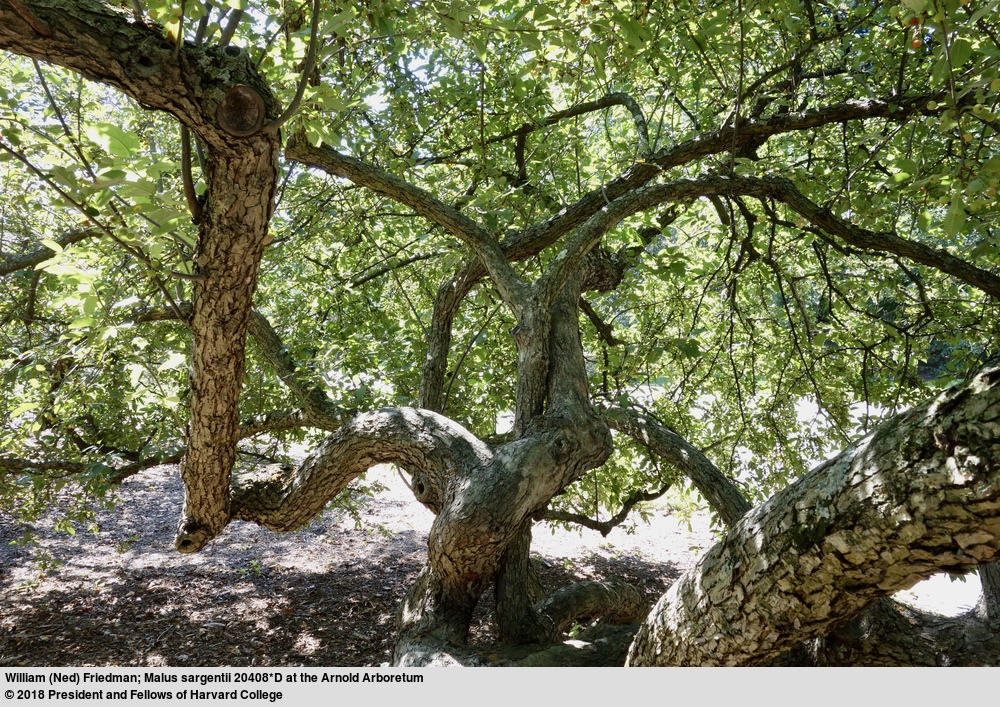Malus toringo
Sponsor
Kindly sponsored by
Francine: 'after many informative Tours and Study Days with the IDS I feel it only fitting to help and promote such a wonderful organisation'
Credits
Julian Sutton (species), Nick Dunn (cultivars) (2021)
Recommended citation
Sutton, J. & Dunn, N. (2021), 'Malus toringo' from the website Trees and Shrubs Online (treesandshrubsonline.
Genus
Common Names
- Toringa Crab
- Siebold's Crabapple
- san ye hai tang
- Zumi
Synonyms
- Malus sieboldii (Regel) Rehd.
- Pyrus sieboldii Regel
- Sinomalus sieboldii (Regel) Rushforth
- Sorbus toringo Siebold
Infraspecifics
Other taxa in genus
- Malus × adstringens
- Malus angustifolia
- Malus × arnoldiana
- Malus asiatica
- Malus × astracanica
- Malus × atrosanguinea
- Malus baccata
- Malus bhutanica
- Malus × brevipes
- Malus chitralensis
- Malus coronaria
- Malus crescimannoi
- Malus Cultivars A-B
- Malus Cultivars C
- Malus Cultivars D-F
- Malus Cultivars G-I
- Malus Cultivars J-K
- Malus Cultivars L-M
- Malus Cultivars N-Q
- Malus Cultivars R
- Malus Cultivars S
- Malus Cultivars T-Z
- Malus dasyphylla
- Malus × dawsoniana
- Malus domestica
- Malus doumeri
- Malus florentina
- Malus × floribunda
- Malus fusca
- Malus × gloriosa
- Malus halliana
- Malus × hartwigii
- Malus × heterophylla
- Malus honanensis
- Malus hupehensis
- Malus ioensis
- Malus kansuensis
- Malus kirghisorum
- Malus komarovii
- Malus × magdeburgensis
- Malus × micromalus
- Malus × moerlandsii
- Malus montana
- Malus ombrophila
- Malus orientalis
- Malus × platycarpa
- Malus praecox
- Malus prattii
- Malus prunifolia
- Malus × purpurea
- Malus × robusta
- Malus rockii
- Malus Rootstock Cultivars
- Malus Rosybloom Cultivars
- Malus × scheideckeri
- Malus sieversii
- Malus sikkimensis
- Malus × soulardii
- Malus spectabilis
- Malus spontanea
- Malus × sublobata
- Malus sylvestris
- Malus transitoria
- Malus trilobata
- Malus tschonoskii
- Malus turkmenorum
- Malus yunnanensis
- Malus × zumi
Small tree or shrub, to 2–6 m. Branchlets spreading, purple, finely hairy at first. Buds purplish brown, ovoid, glabrous or with fine hairs on margin of terminal scales. Leaf blade variable in shape, ovate to narrowly elliptic, 3–7.5 × 2–4 cm, both surfaces finely hairy at first, hairs becoming confined to main veins beneath with time; base rounded to cuneate, apex acute, margin irregularly toothed, some 3–5-lobed; petiole 1–2.5 cm, finely hairy. Inflorescence a 4-–8-flowered corymb; pedicels very slender, 2–2.5 cm. Flowers 2–3 cm diameter, in spring (April-May in China); sepals narrowly lanceolate, acuminate, sometimes hairy above, falling before fruit is ripe; petals about 1.5 cm, white or flushed pink in bud; stamens 20, unequal; styles 3–5. Fruits red to yellow-brown, globose, 5–8 mm diameter, August-September in China. (Gu et al. 2003; Ohwi 1965; Bean 1981; Cullen et al. 2011).
Distribution China Fujian, Gansu, Guangdong, Guangxi, Guizhou, Hubei, Hunan, Jiangxi, Liaoning, Shaanxi, Shandong, Sichuan, Zhejiang Japan Hokkaido, Honshu, Kyushu, Shikoku North Korea South Korea Russia Sakhalin
Habitat Mixed forests and shrubby vegetation; 150–2000 m asl in China.
USDA Hardiness Zone 4-8
RHS Hardiness Rating H6
Conservation status Data deficient (DD)
Malus toringo is one of the small-fruited East Asian species with a deciduous calyx and at least some lobed leaves. As usually seen in gardens, it is a disease resistant small tree or shrub reaching about 3 m in height, with a somewhat weeping habit; its flowers are white, from pink buds, and its fruits are yellow. A well-grown specimen of a good form is a lovely thing. This is however a more variable species in the wild. Taller trees to 10 m have sometimes been called var. arborescens Rehd. (Rehder in Sargent 1916) although these probably represent one end of a spectrum. Red fruited forms are also common. It is now widely accepted (e.g. Juniper & Mabberley 2019; Royal Botanic Gardens, Kew 2020) that the older name M. toringo should be used, rather than the more familiar M. sieboldii.
Foliage can look very different depending on the season. All the leaves which are preformed in the bud, emerging in spring, are unlobed: these comprise most of the leaves on spurs and the basal leaves of long shoots. Only leaves which are initiated and expand in the same growing season, that is the occasional leaf on a spur and those leaves further from the base of long shoots, may be lobed (H. McAllister pers. comm. 2020). Hence, lobed leaves are absent at first, but become more prominent as the year progresses.
This is primarily a diploid, sexual species which readily produces hybrid seed when outcrossed in collections, although triploids and tetraploids also occur (Höfer & Meister 2010; Gu et al. 2003; Sax 1959, H. McAllister pers. comm. 2020). Var. sargentii (below) is one of these tetraploids. Fiala’s (1994) claim that ‘true’ M. toringo is a yellow-fruited pentaploid, while M. × zumi (which he most unhelpfully calls M. sieboldii (Rehd.) Fiala) is a red-fruited diploid, is made without citing any reference, seems deeply suspect, and has been generally ignored. The status of M. × zumi (q.v.) is very uncertain; in Japan it has usually been treated as M. toringo var. zumi (Matsum.) H. Hara, with leaves not or scarcely lobed (Iketani & Ohashi 2001).
Small-fruited cultivars raised from seed of M. toringo are often listed here uncritically. Some appear to be unhybridized, but many are clearly hybrids, for example the purple-leaved ‘Aros’ and ‘Scarlett’ (see ‘Cultivars A-B’ and ‘Cultivars S’ respectively).
Malus toringo has long been cultivated as an ornamental in Japan and China, and has been used as a rootstock for grafting apples in north eastern China (Gu et al. 2003; Sargent 1916). It was first described scientifically (as a Sorbus) in 1848 by the German Philipp von Siebold, who practised medicine in Nagasaki during the 1820s. Confusingly, the specific epithet is derived from the Japanese name for M. asiatica, a quite different apple, as Rehder makes clear in Sargent (1916). Its introduction by Siebold to western cultivation, initially in Europe, is conventionally placed at 1856 (Bean 1981), although this date falls towards the end of Siebold’s long banishment from Japan under suspicion of spying for Russia. This first introduction was of the smaller, yellow fruited form most often seen today, from Japanese cultivation (Sargent 1916). A taller form was introduced to the Arnold Arboretum from Japan by Sargent in 1882 (Fiala 1994). Numerous introductions have been made by later collectors, from Ernest Wilson onward. John Grimshaw (pers. comm. 2020) claims a specimen from BBJMT 96 as the finest crab in the Yorkshire Arboretum’s collection.
Large, old specimens are uncommon in Britain. Good examples include trees at RBG Edinburgh, one dating from 1905 (9 m × 136 cm, 2014 – The Tree Register 2020). Quite widely hardy in Western Europe, there are several specimens of Japanese provenance at Gothenburg Botanic Garden, some dating from the 1950s (Gothenburg Botanical Garden 2020); it grows as far north as Trondheim, central Norway, where it forms a low, multistemmed tree (NTNU University Museum 2020). monumentaltrees.com (2020) records a large, umbrella shaped specimen in Eindhoven, Netherlands (10.8 m × 149 cm, 2013).
In the past it was very common in the North American nursery trade, but is now rarely offered (Jacobson 1996). It remains common in collections, though, on both sides of the continent, with several wild origin examples from Korea and Japan at the Arnold Arboretum, MA, the Morton Arboretum, IL, and the David C. Lam Asian Garden, Vancouver, BC for example (Arnold Arboretum 2020, Morton Arboretum 2020; University of British Columbia 2020).
'Brouwers Beauty'
A clone marketed in Europe for uniform plantings.
Growth Rate/Size: Medium (<6 m)
Form/shape/habit: Rounded, somewhat spreading
Foliage: Green, sharply toothed
Flower colour: Blush, from purplish-pink buds
Flower size: Small (<3 cm)
Flower form: Single
Fruit size: Very small (<1 cm)
Fruit shape: Round
Fruit colour: Yellow
Disease resistance/susceptibility: Resistant
Raiser/collector: NAKB, Netherlands
Date of introduction: 1996
(Description duplicated under Malus Cultivars A-B ‘Brouwers Beauty’)
var. sargentii (Rehder) Ponomar.
Common Names
Sargent Crab
Synonyms
Malus sargentii Rehder
Malus toringo subsp. sargentii (Rehder) Likhonos
Pyrus sargentii (Rehder) M.F. Fay & Christenh.
A shrub to 2.5 m, with very dense, thorny branches. Flowers larger, to 2.5 cm across; petals white. (Cullen et al. 2011; Edwards & Marshall 2019).
This most attractive shrubby variety is well known in gardens and less easily confused than many of its relatives. Palest pink buds open to particularly substantial flowers, with broad, rounded, overlapping petals (Bean 1981) which show off the yellow anthers. Its abundant red fruits look good against the yellow autumn foliage (Jacobson 1996).
It has often been noted that seedlings from Sargent’s Crab are mostly true to type (Jacobson 1996), although this cannot be relied upon. This is a tetraploid plant showing facultative apomixis: almost all its seedlings are tetraploids, genetically identical to the mother (Sax 1959). The fact that it can produce sexual offspring, mostly triploids resulting from crossing with sexual diploid species, explains the existence of cultivars and hybrids such as ‘Rosea’, a triploid with deeper pink buds raised at the Rochester Parks Department, NY before 1921 (Sax 1959); ‘Tina’ is an important modern cultivar (see ‘Cultivars T-Z’), an open pollinated seedling of var. sargentii, which is even more dwarf. Whether or not any of these should be treated as belonging in this variety is debatable. ‘Candymint Sargent’ with its purple leaves is more obviously a hybrid (see ‘Cultivars C’).
The epithet sargentii commemorates Charles Sprague Sargent, the aloof Massachusetts dendrologist and Civil War veteran who was Director of the Arnold Arboretum for over 50 years. Sargent collected this plant in a brackish marsh in Hokkaido, northern Japan, in 1892 (Sargent 1916). Perhaps because of its garden worthiness, and the relative lack of intermediate forms in cultivation as opposed to the wild, its taxonomic status has been elevated by those who work with cultivated material. The horticultural literature has tended to list it as a full species (e.g. Bean 1981), and there is certainly a case for treating it as an apomictic microspecies in the orbit of M. toringo, but botanists have regularly sunk it entirely (e.g. Ohwi 1965; Royal Botanic Gardens, Kew 2020). A group of similar forms rather than a cultivar, this important garden plant requires a name, so we take a middle course following Cullen et al. (2011).


